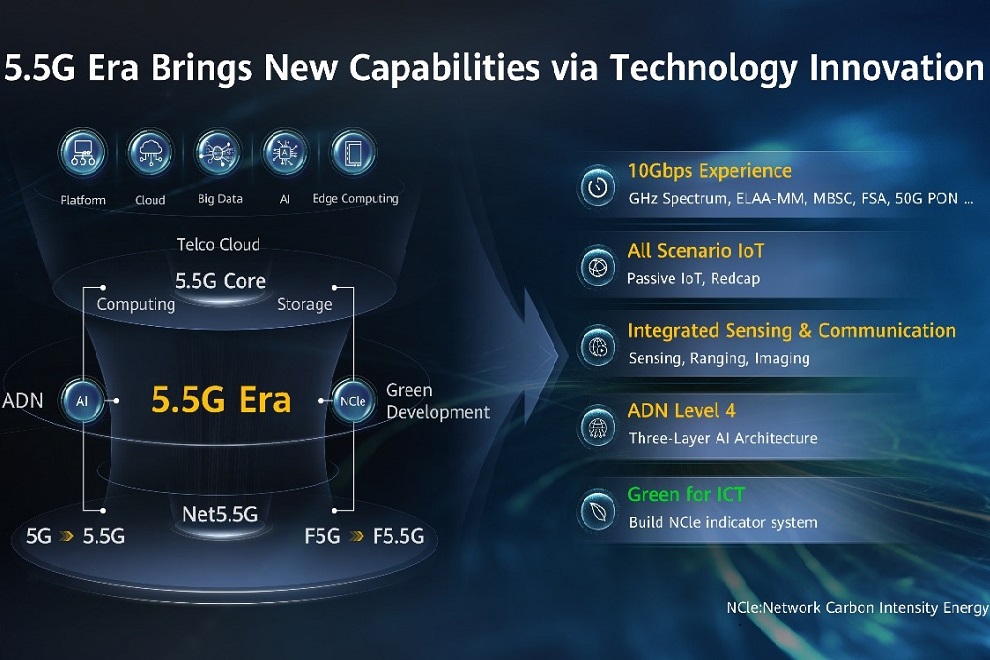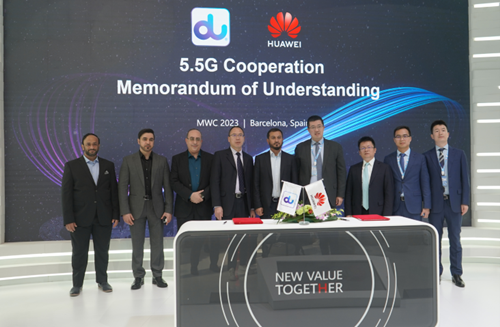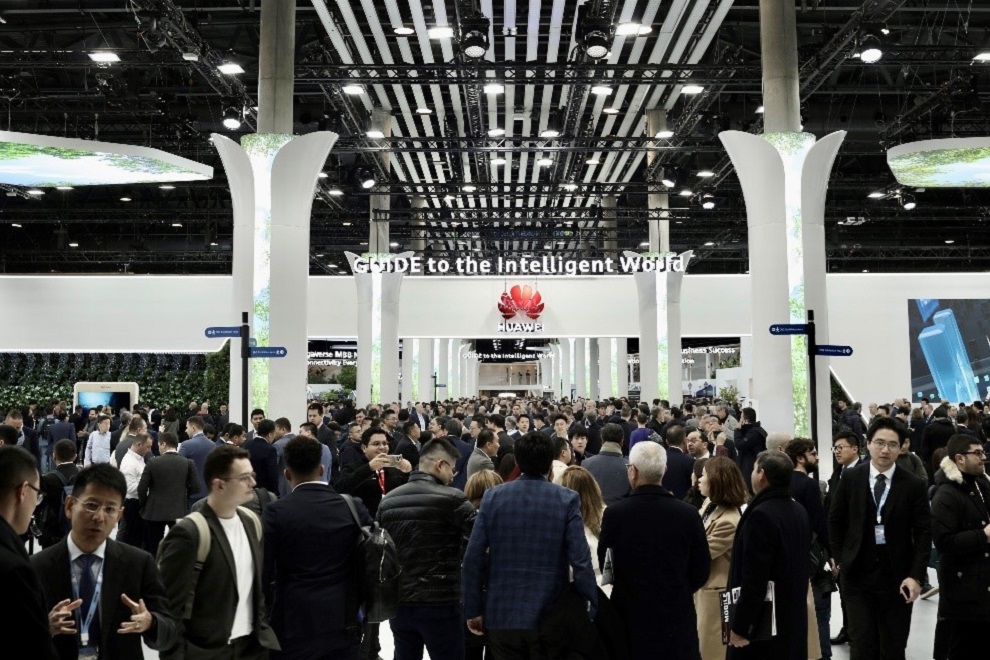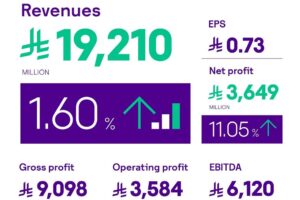During the Mobile World Congress (MWC) 2023, the Chinese tech giant Huawei highlighted the importance of developing 5.5G to accelerate us towards an intelligent world.
To call upon industry partners to promote industry consensus and commercial deployments for the 5.5G era, Huawei hosted the ‘5.5G Is Coming Summit’ at MWC 2023. During the summit, Yang Chaobin, Senior Vice President and President of ICT Products & Solutions at Huawei, explained that the rapid growth of 5G has led to new service requirements becoming more diverse and complex, requiring stronger 5G capabilities. Taking 5G to its next milestone 5.5G is necessary to improve 5G, which has become an industry trend and an established consensus, he added.
“Now, the industry has defined clear roadmaps for 5G-Advanced (5.5G), F5G-Advanced (F5.5G), and Net5.5G standards and introduced clear spectrum strategies. Key technologies and applications have been verified, and the industry consensus has steadily progressed to best practices. With all these developments, 5.5G is arriving at an accelerating rate to improve network capabilities by 10 times for various industries looking to unleash stronger digital productivity,” said Chaobin.

At MCW 2023, Huawei committed to laying the foundation for 5.5G and building an intelligent world for all. The company’s massive participation at MWC Barcelona 2023 showcased new opportunities and industry progress in the 5.5G era, under the theme GUIDE to the Intelligent World.
5G is now in the fast lane after three years of commercial use. By the end of 2022, global 5G users exceeded 1 billion, gigabit broadband users reached 100 million, and more than 20,000 industry applications were put into use. New immersive services such as XR and holographic communications are maturing, and connection experiences are improving from 1 Gbps to 10 Gbps. The explosive growth of IoT applications is a clear trend. For example, IoT connections in China outnumbered the connections for people in 2022. Digitalization has expanded deep into core production systems, creating more diverse requirements. For example, 1 Gbps uplink is needed to support high-precision industrial vision for AI-based inspection, remote control in mining industries, self-driving, and other services in which 5G is integrated with cloud and AI.
Chaobin noted that, as 6G is still in its early stage of research, 5.5G is a necessary and natural evolution of 5G, and this has become an industry consensus. He believes the industry must jointly promote 5.5G development in four areas – clear roadmaps for industry standardization, clear spectrum strategy, steady implementation of industry consensus, and smooth evolution for maximized ROI.

Ushering a new era for metaverse, du and Huawei sign
On the sidelines of MWC, UAE-based telecom provider du signed a Memorandum of Understanding (MoU) on 5.5G strategic cooperation. Saleem AlBlooshi, CTO of du, explained that the MoU was aligned with the UAE’s Metaverse strategy, and its partnership with Huawei will enable du to achieve its goal of making 5.5G technology available for commercial use. He added, “Our goal is to create an ecosystem in which every aspect of life can benefit from the unique features that 5.5G technology has to offer, ranging from improved connectivity and faster speeds to full-scenario IoT and extensive coverage.”
As one of the fastest-growing telecommunication operators in the UAE, du works closely with Huawei and has outstanding performance in 5G network experience and service development, capturing a large share of the Middle East market. Through this partnership, du and Huawei will strengthen cooperation in 5.5G innovation, including technological innovation, and E2E network evolution, to help du continuously enhance user experience and lead the UAE market in 5.5G development.
Benefits of F5.5G
The enhancement and expansion of F5.5G capabilities will mean that users are provisioned with 10 Gbit/s everywhere and a peak rate of 50 Gbit/s. This meets users’ requirements for experience improvement and continuously improves network values.
In addition, latency will be reduced to microseconds, and availability will be improved to 99.9999%, enabling fiber networks to extend to core industrial manufacturing systems and accelerating industry digital transformation.
Lastly, F5.5G will help us move from optical communication to optical sensing. The Rayleigh scattering and Brillouin scattering effects of optical fibers are used as environment monitoring methods, such as vibration, stress, and temperature detection, to explore new business opportunities. For example, in the oil and gas pipeline industry, construction and landslides can be located at the meter level using the algorithms based on the vibration changes of the surrounding environment of the pipeline. The event identification accuracy reaches 99%.












